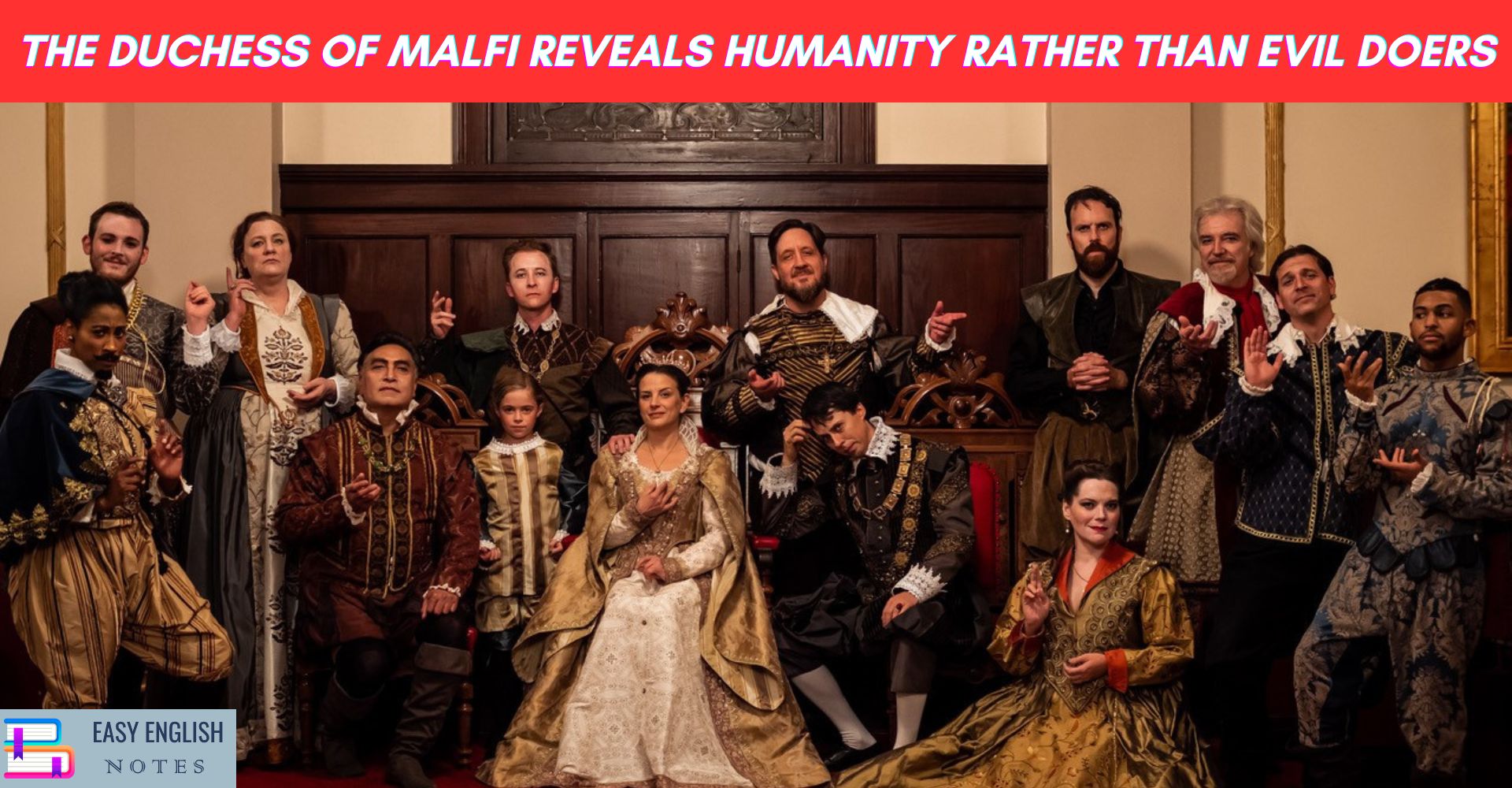Though Webster was of negative character and pessimistic mind, the heroine of the play the Duchess of Malfi reveals humanity. The evil-doers do in their own way-But she always does the right action. She was gripped by a malevolent and indifferent fate. She was hanged but she remained ethical, cool and calm. You see in the drama that from both Ancona and Siena, the Duchess, her two youngest children, and her waiting-woman were captured and taken to Malfi and were never heard of again. Antonio founds his way to Milan, where a year later he was assassinated in the street by one Daniele da Bozolo, in league with three accomplices.
Webster’s source for the story was the second volume of William Painter’s Palace of Pleasure (1567). Painter rendered the story from the French of Belle forest’s Histories tragiques (1565) which in its turn presents a greatly expanded version of the original tale, found in Mattero Bandello’s Novella (1554).
Webster departs in several important respects from the account given in his source. The Duchess, who is depicted in painter as a lascivious and justly punished woman, becomes a much more attractive figure. The role of Bosola is expanded and developed. And the events of the last phase of the story, though still somewhat diffuse in Webster, are more succinctly told than in the original.
A further source must be mentioned: Webster’s own earlier play, The White Devil. It has often been pointed out that there is a pronounced similarity between the two and that the Duchess story is, in a sense, the equal and opposite of that of Vittoria. Both choose a husband unwisely, and with questionable public morality. Both are passionate women who reconcile their suspect actions with their ethical standards. In both plays the lovers are crushed by an immoral society. Into both, Webster introduces an agent and commentator who is an ironic malcontent. Both begin with a depiction of the corrupt public world and end with a flurry of violent action.
Also Read :
- Compare Hamlet with Macbeth, Othello and other Tragedies
- A Short Note On The Use Of Imagery In Shakespeare’s Sonnets
- Prologue to Canterbury Tales – (Short Ques & Ans)
Webster has followed without much rearrangement or compression; the course of Painter’s narrative down to the death of the Duchess. His additions to the narrative, in respect both of plot and characterization, are significant and numerous. To Painter’s story the dramatist added the brothers definite injunctions to the Duchess against a second marriage, the whole of the part assigned to Bosola prior to his killing Antonio, the sudden visit of Duke Ferdinand to the Duchess bed-chamber, the spectacular ceremony at Loretto, the whole of the Cardinal-Julia sub-plot and practically the whole of the Fourth and Fifth Acts-the incident of the dead hand, “the artificial figures of Antonio and his children appearing as if they were dead”, the madmen with their song and dance, the episode of the tomb-maker and of the bellman, the “pestilent lycanthropic” of Ferdinand, Antonio’s visit to the Cardinal, the “echo” scene, the intrigues and counter-intrigues of Bosola and the Cardinal, Antonio’s death by mistake, the deaths of Ferdinand, and the Cardinal and Bosola.
PLEASE HELP ME TO REACH 1000 SUBSCRIBER ON MY COOKING YT CHANNEL (CLICK HERE)











